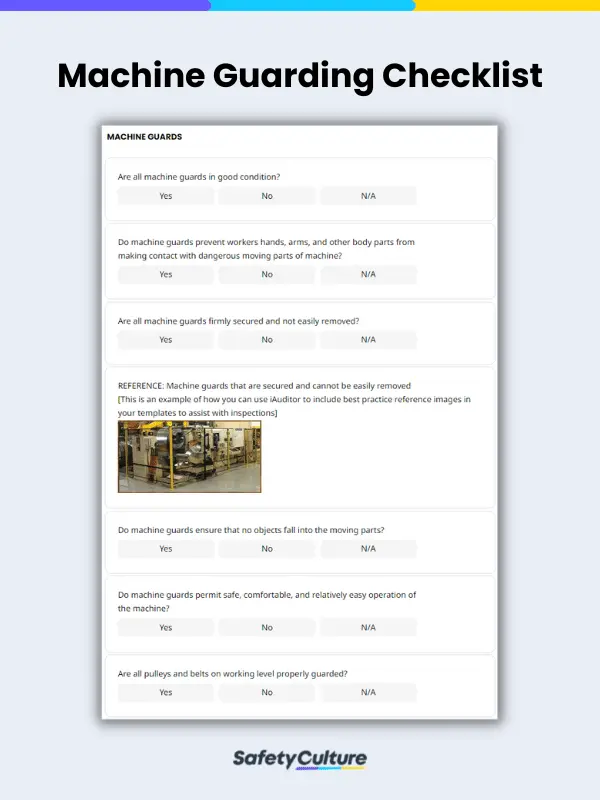What is Machine Guarding?
Machine guarding is a safety feature or part of an equipment that functions as a barrier between the dangerous or moving parts of an equipment and the workers that operate the machines or work around them. It is implemented to prevent machine related injuries ranging from minor ones such as burns, cuts, minor abrasions, and severe ones like fractures, lacerations, crushing injuries and even amputation. Machine guarding requirements and standards are provided by health and safety authorities like OSHA and EHS to guide industries in the selection and procurement, safe work practices, inspection, and record keeping of machine guarding equipment and devices.
What is a Machine Guarding Checklist?
A machine guarding checklist is a tool used as a guide by safety officers and operations supervisors when inspecting the condition and correct use of machine guards in the workplace. A type of machine safety checklist, machine guarding checklists help ensure that machine guards are in good working condition and that workers are protected and aware of safe practices when operating equipment that requires machine guards.
Importance of Machine Guarding
Workers who operate and maintain machinery suffer approximately 18,000 amputations, lacerations, crushing injuries, abrasions, and over 800 deaths per year in the United States alone (source: OSHA). These incidents can be minimized or eliminated through machine guarding. Installation and regular maintenance of machine guards can prevent worker’s body parts from making contact with hazardous machine equipment and flying debris. Additional defenses such as Personal Protective Equipment (PPE) and proper training are key to ensuring safety when operating machinery in your workplace.
Machine Guarding Safety Tips
Employers should strive to keep their workplace and workers safe particularly when working with machinery. Here are some safety reminders when working with machine guards:
- Always check if guards are properly installed before commencing work.
- Machine guards must be placed in proper position and prevent physical contact with the operator.
- Ensure machine guards are secure and strong.
- Ensure workers cannot bypass, remove, or tamper machine guards.
- When installing machine guarding ensure that no objects can fall into moving parts of the machine.
- Ensure employees are trained on a specific machine guard.
- Machine guards should not obstruct the operator’s view.
- If possible, the machine should be lubricated without removing machine guards.
- A competent person must correct the machine guard immediately if defects were detected.
- Machine operators should be trained on the hazards associated with particular machines.
- Reinforce employee awareness of emergency protocols around machine guarding through toolbox talks.
- Lockout the machine before removing guard when performing maintenance.
- Conduct regular safety checks using a machine guarding checklist to reinforce safe practices around equipment.


